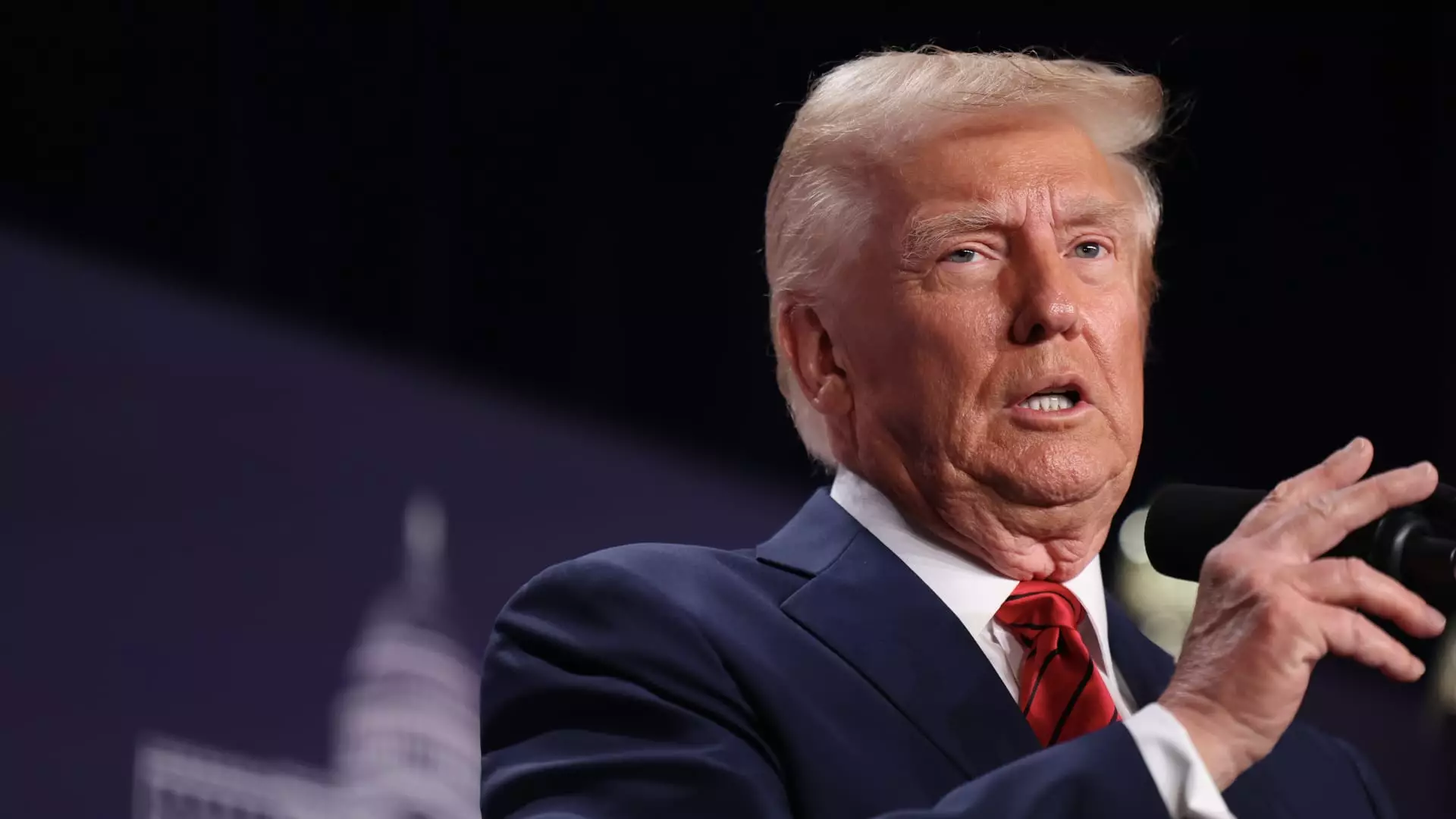President Donald Trump’s discussions on tariffs have been a prominent feature of his administration’s trade strategy, with the most significant measures set to take effect on February 1. Tariffs on imports from Canada, China, and Mexico are expected to impose considerable strain on U.S. consumers and businesses alike. Economists widely agree that these measures, particularly aimed at the three largest trading partners of the United States, will likely lead to higher prices and a contraction in economic growth.
Tariffs fundamentally serve as taxes on imported goods, which businesses are then typically compelled to transfer onto consumers. The proposed tariff structure includes a 25% taxation on imports from Mexico and Canada and a 10% tariff on products coming from China, according to statements from White House Press Secretary Karoline Leavitt. In 2022, these countries represented a significant portion of U.S. imports, with China supplying approximately $536 billion, Mexico $455 billion, and Canada $437 billion in goods, as reported by the Office of the U.S. Trade Representative. This context underscores the direct consequences that tariffs could have on everyday consumer prices.
Concerns are mounting among economists regarding the inevitability of cost increases and diminished choices in products as the new tariffs are implemented. According to Mary Lovely, a senior fellow at the Peterson Institute for International Economics, while the intent may be to protect American industries, the ramifications for consumers could be mostly negative. The adoption of tariffs could not only raise prices but also limit the variety of goods available on store shelves, a byproduct of reduced import flows.
The uncertainty surrounding which goods may be exempt from tariffs adds another layer of complexity to the issue. President Trump hinted at potential exemptions, such as those for Canadian oil, but the specifics remain obscure. White House officials have indicated that discussions are ongoing, with the possibility of further exemptions being considered to mitigate negative impacts on U.S. consumers.
Mark Zandi, chief economist at Moody’s, mentions that the administration may seek to limit consumer harm through selective exemptions. Goods that could be insulated from the tariffs might include essential items like food products or electronics, which could stabilize prices in those sectors. However, this piecemeal approach may not prevent broader economic damage resulting from the tariffs. Overall, the tariffs are projected to raise about $1.3 trillion in revenue by 2035, according to the Committee for a Responsible Federal Budget, which could serve as a partial offset against a costly tax package.
Despite the administration’s optimistic rhetoric, many economists contend that the looming tariffs are more likely to stifle economic growth than foster a new era of prosperity. Estimates suggest that a 10% tariff on China alone could decrease the U.S. GDP by $55 billion, while the 25% tariffs on Mexico and Canada could result in a $200 billion hit to the economy. These findings highlight the potential for a significant negative impact on American households, expected to see price increases in essential goods.
The alarming reality is that a broad tariff strategy could cost the average family thousands of dollars annually. An October analysis by the Tax Policy Center projected that the average U.S. household could face an additional $3,000 burden by 2025 if universal tariffs are enacted. This exacerbates a growing list of challenges faced by American consumers, particularly those at the economic margins.
In addition to the direct price hikes associated with tariffs, indirect effects are likely to ripple through the economy. Industries that rely on imported goods for manufacturing may also see price increases passed along to consumers. For instance, additional tariffs on steel not only could elevate the cost of construction materials but also inflate prices for finished products like vehicles and machinery. This highlights the interconnected nature of global trade and domestic manufacturing.
Furthermore, retaliatory tariffs from affected countries could escalate tensions and disrupt trade relationships, potentially leading to a protracted trade war. Unlike neighbors Canada and Mexico, whose responses may be more diplomatic, China has a history of implementing retaliatory tariffs that could exacerbate economic tensions. Such retaliatory measures would place U.S. exporters at risk, increasing the likelihood of job losses in sectors reliant on international markets.
Ultimately, the administration’s tariff plans raise significant concerns among economists regarding their efficacy and potential consequences for American consumers. As President Trump pushes forward with these policies, the larger questions remain: Will the anticipated benefits truly materialize, or will American families bear the burden? As consumers prepare for pricing shifts and possible shortages in goods, the dialogue surrounding tariffs emphasizes the intricate balance between protecting domestic industries and maintaining a healthy economic landscape in which consumers can thrive. The impending tariff implementation serves as a crucial test of both policy and its practical fallout in the broader economy.


Leave a Reply